Softball is one of the most popular games in the United States, with over ten million fans regularly playing it – and picking it over baseball! We detail seven great tips to improve your slow pitch softball hitting.
Interestingly, over 80% of American softball players are women.
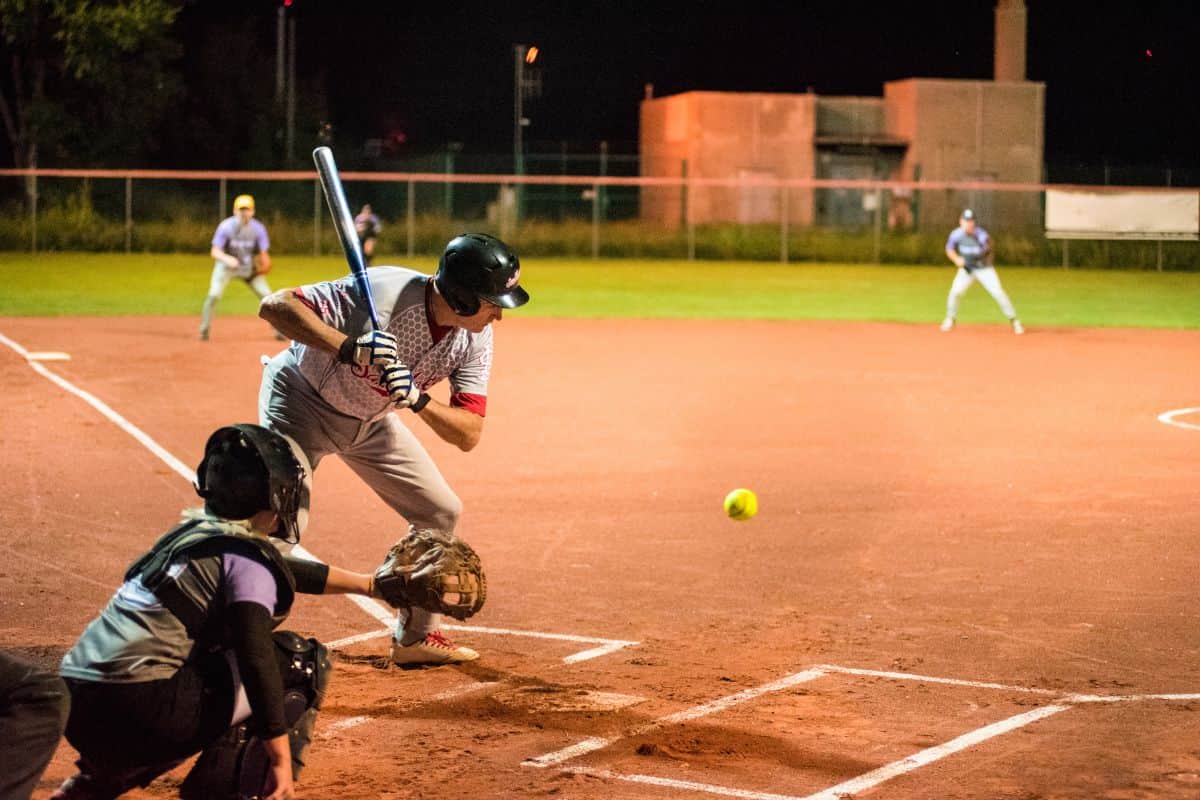
But how can you reach a professional level? How can you improve your game and become a better slow-pitch softball hitter?
Well, we’ve got the answers for you! In our handy guide below, we’re going to be giving you a whole variety of essential professional tips that will help you improve at being a slow-pitch softball hitter.
On top of that, we’ll look at some of the most influential female and male softball stars, as well as clear up the difference between softball and baseball.
They’re admittedly similar, but there are some important differences!
Read on!
What Is Slow Pitch Softball?
Softball is a sports game similar to baseball, some of the key differences being all about ball size and the pitcher’s mound. However, we’ll get into the handful of key differences in the next section.
There are two different types of rule sets that you can play with softball: slow pitch and fast pitch. Slow pitch is most often played in a recreational way, meaning that it’s for fun and not too competitive.
On the other hand, fastpitch softball is typically played in professional settings, such as competitions like the Summer Olympic Games.
Slow pitch softball uses an underarm pitch, while fast pitch uses a windmill-like throwing motion, pitching at an upwards angle at high speeds.
Additionally, slow pitch baseball doesn’t allow “bunting”, which is when the batter can tap the ball rather than swing to hit it, but fast pitch does.
Slow Pitch Softball vs Baseball – What’s The Difference?
Softball and baseball may look similar, but there are a handful of key differences between them when it comes to the most important parts of the game.
- Ball Size – For one thing, softball uses a larger ball than baseball. With softball, the balls tend to be 11 or 12 inches in their diameter, while baseball uses balls with a diameter of 9 inches instead.
- Throw Style – In softball, the pitcher throws the ball with an underhand throw, while baseball pitchers have to throw overhand.
- Home Run Fence – The home run fence, or the outfield fence, differs between the two sports. For softball, the fence is between 200 and 229 feet, while a baseball fence is under 300-400 feet.
- Base Path – The base paths in a softball game have 60 feet between each of them, while in baseball, they distances are bigger: 90 feet apart.
If that’s how the two sports games are different, how are they similar?
Well, besides the fact that they both use bats and balls, they also have similar roles. Both use a pitcher, a catcher, and four infielders and three outfielders.
Additionally, the general rules of softball and baseball are the same, with the winner being whichever team has scored the most runs.
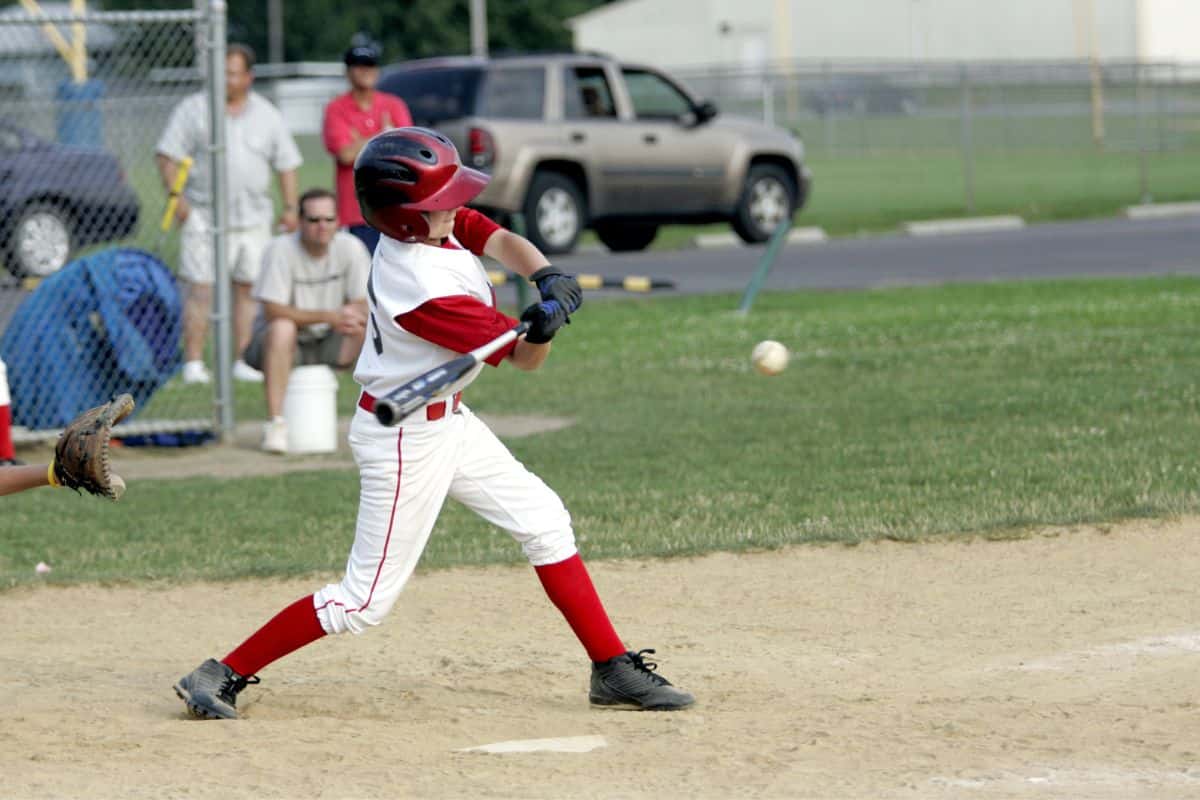
How To Hit Slow Pitch Softball – What Are The Basics?
If you’re going to take things to a more professional level, or simply just get better at the sport, then you’re going to need to have a full understanding of the basics.
Once you’ve got a grasp of the basics of softball, you’ll be able to build your game from there and get better and better.
We’re going to explain a series of tips that can help you to really get a grip of the basic game of softball. These tips will help you use your energy and force properly, as well as swing the softball bat properly.
It may not have occurred to you, but it can be very easy to swing the bat and get different results to what you intended.
How so? Well, if you swing and hit the ball downward, the ball will end up swearing upwards instead. If you keep this in mind, you can hit more consistently.
1. Ensuring You Have The Correct Batting Uniform
A player can only get so far on their skill – they need the proper equipment to match it. Even the best softball player isn’t going to be able to do well enough if they have poor-quality batting equipment.
Thankfully, getting good enough equipment doesn’t always cost loads of money. The important thing, though, is to get good quality equipment that works for you.
If the equipment is uncomfortable to you, then it’s going to be worthless and probably affect your game for the worse. If you’re not comfortable, you’ll be distracted from your game.
Firstly, find yourself a comfortable softball outfit. There are often regulation uniforms you’ll have to wear, so find something that fits just right on you – not too tight, not too loose.
If you want, you can get some batting gloves to add to the uniform. These won’t be for everyone, but give them a try – they might give you more grip control of the bat.
Additionally, safety is very important. You’ll want to buy a protective helmet and some protective cups, in order to stop your body from getting injured by the ball when you’re batting.
2. Getting The Correct Bat
The correct uniform needs the correct bat. The bat is absolutely essential to your slow pitch softball success. With a poor bat, you’ll have no hope of successful hitting.
On top of that, you need to have a bat that meets regulation rules. Your softball bat must be shorter than 34 inches in length, otherwise, it’s not allowed.
Other than that, you can get one that’s exactly how you want. For example, you might want to wrap some gripping tape around the bat’s handle because it’ll give you a stronger grip when you’re holding it and swinging.
More importantly, you will want to get a bat that is quite light too. If the bat is too heavy, you’ll be spending too much energy just lifting it up, and your swing will be slower.
Softball bats that are made out of aluminum are a great pick because they are made of light material.
3. Positioning Your Hands Properly On The Bat
Now that you’ve got the perfect, light softball bat, you’ll want to make sure you have the perfect hand grip on it.
Interestingly, a lot of this is all about lightness too. Just as you wanted the bat to be light, you’ll also want to hold the bat quite lightly. This keeps it all limber and helps you to move and swing easily and quickly.
If you grip the bat too tightly, then you’re going to be all rigid and might miss your hits. Instead, hold the bat lightly, positioning it so that it rests on your shoulder softly and hovers by your back.
This way you’ll be light and ready, able to swing quickly and effectively as soon as you need to.
As for gripping the bat’s handle, you can do it how you like. There isn’t necessarily a right or wrong answer, you just need to find a grip that is comfortable for you.
This is going to be different from person to person, so practice a bit by placing your hands in different positions and see which grip gets you the best results.
As you see the ball being pitched, keep both of your hands back until you swing. At the same time, stride forward with your front foot to meet it, ready to swing and connect with the ball.
4. Standing With A Comfortable Stance
Stance is incredibly important. Your stance goes to determine how much force you’re going to create and therefore how strongly you’re going to hit the ball. However, it is essential that you’re comfortable in your stance as well.
If you’re uncomfortable as you stand, you might become distracted by pain, or mess up the way that you stride forward or swing.
Therefore, you need to find a stance that is both effective and comfortable to you.
Firstly, you need to plant your legs properly. Put your legs apart as you stand, with a gap between them the size of a shoulder.
Then stand so that your body is a straight line, not leaning forwards or backward, simply straight.
Additionally, make sure that your body weight is distributed evenly so that you’re not overbalanced onto one side or the other.
Your back leg should also be planted firmly on the ground, while the front foot is ready to go forwards.
And what about when you move into the swing? When you swing, your stride forward will help to shift most of your weight over to your back.
As the ball comes, stride forwards by two short steps, keeping your back foot holding the ground.
As you swing, rotate your hips in a way that moves them in parallel with your shoulder. A successful rotation will not only give you a more forceful hit but help to keep your balance.
5. Getting The Correct Swing
Let’s get into that swing in more detail. After all, it’s an incredibly important part of softball!
There are a handful of different areas that you’ll want to focus on and fine-tune, and we’re going to go through them all now.
For one thing, make sure that your chin is on your front shoulder as you begin your swing.
Once you’ve followed through and the swing is complete, you will find that your chin is now on your back shoulder.
On top of that, make sure that you are always using both eyes when watching the ball.
If you just use one eye, you’re not going to be able to judge the distance of the ball from you properly, and you likely end up missing it.
Additionally, stay calm. Take your time. You don’t want to rush your swing because you could miss it, and your stressed rush might have made the hit misfire anyway.
Instead, take it at your own pace, moving when you see (with two eyes!) the pitcher throws the ball. Aim to hit the ball when it’s about a foot from you.
As for swing specifics, you’ll want to swing in an arc shape of about 180 degrees minimum. Your grip will tighten as the swing continues, and that’s fine!
6. Gripping Your Bat Better
We’ve spoken earlier about where you should place your hands on your bat, and that’s wherever is most comfortable for you.
However, when it comes to the grip that you should hold the bat with, there are a few rules that you’ll need to keep in mind to have a more successful softball swing.
Firstly, you will want to make sure that you break the alignment of your wrists when you’re hitting the ball.
If you do it at the best time, it will give your hit a lot more force, smacking that ball much further into the field.
Secondly, you might want to try using an overlapping grip. This is when one of your hands is placed on top of the other, with the two hands overlapping.
This type of grip has worked wonders for a lot of players and is preferable to the regular softball grip. However, try it out first and see if it works for you. If it doesn’t, that’s fine! You can use the standard grip instead.

Finding Your Launch Angle
Now that we’ve looked at top tips to help your stance, grip, swing, and uniform, it’s time to look at the “ launch angle.”
This is the term in softball that is used to describe the vertical angle that the ball flies at when it’s hit. As it goes up into the air, the angle that it’s flying at is the launch angle.
Types Of Launch Angle
Within the launch angle, there are a few different angles that have their own terms. You might have heard of these, perhaps when announcers use them during a game.
- Ground Ball – This term is exactly as it sounds, a low ball! This is used when the ball has been hit with a launch angle that is under 10 degrees.
- Line Drive – This is the next best launch angle, where the ball has been hit with a launch angle of 10 to 25 degrees.
- Fly Ball – This is a popular one that you’ll have definitely heard being used in games. When a “fly ball” is hit, it’s when the ball has a launch angle between 25 and 50 degrees.
- Pop-Up Shot – This is the top level of the launch angle, where the ball has been hit with an angle of over 50 degrees. Impressive!
Interestingly enough, some people believe that a ball will travel the furthest distance when it’s hit with a launch angle between 20 and 35 degrees.
Knowing this, you can try and angle your hit in a way that approximates somewhere in that margin.
Understanding The Competition
However, understanding this isn’t enough if you want to improve your slow-pitch softball skill.
Additionally, you’ll need to understand the pitcher who’s going to be throwing to you. With every pitcher, they have an “aLAA,” which stands for their “average Launch Angle Against.”
These use data from the pitcher’s previous throws and games, looking at the types of balls they tend to throw.
For example, they might most often throw Line Drive balls. When you know this, you know what to expect, and you can prepare your game accordingly.
Since a Launch Angle is the angle that the ball is going to be going up after you’ve hit it, you might be wondering why the pitcher and their throwing style even come into it.
This is because the way that a pitcher throws the ball will actually heavily influence the angle that you’re going to be able to hit it at, and so you need to account for both you and the pitcher when you play.
Things To Avoid – Slow Pitch Softball Hitter Mistakes
So far, we’ve looked at the things that you should do, but now it’s time to look at the things that you really shouldn’t.
If you want to become a successful slow-pitch softball hitter, then it’s worth studying other players in the same position and learning from them.
This way, you can see the mistakes that they make and know what to avoid.
To save you some studying time, we’ve done the work for you! Here are a handful of common mistakes that slow pitch softball hitters often make.
These are easy mistakes to make, but they’re easy to avoid if you know what to look out for.
Your Balance Is Wrong
Balance is incredibly important in softball. A successful hit can live or die on your balance, so it’s important to make sure that you’ve got the correct balance every time you get ready to hit.
You need to ensure that you have your body weight evenly distributed, making sure that you’re not leaning more in any one direction.
Without the even balance, you won’t be able to shift your weight over to your back foot as you’re swinging, causing your hitting momentum to falter and be weak.
Your Grip Is Wrong
Similarly, it’s very important that you have the correct grip on your bat. We mean this in two ways.
Firstly, there is no proper grip. You need to find a grip that is comfortable and successful for you. If you have an uncomfortable grip, you’re going to be distracted and potentially even hurt, causing you to hit the ball poorly.
Secondly, you need to have a grip that is quite light. Still firm enough to have complete control but not too hard.
Some softball players will have a grip that is too tight, thinking that the tighter the grip, the stronger the hit. This simply isn’t true, and an overly tight grip can cause your hit to go very wrong.
Your Timing Is Off
There is a lot of pressure when you’re standing ready to hit, and we understand that. However, this can make a lot of softball players either hit too slowly or too quickly, or even too early or too late.
Always be calm and make sure that you focus entirely on the ball. Ignore all other distractions, and use BOTH eyes to watch the ball.
If you only use one, you will misjudge how far the ball is from you and likely miss it. Knowing the correct distance, you can have a good idea of when to swing.
You’re Overdoing It
Finally, some softball players will simply try too hard. It’s easy to assume that hitting every ball in a massive way is a good idea, but it isn’t.
Take each ball as it comes, and don’t tire yourself by always trying too hard. Don’t rush; just take it slowly, and concentrate on the ball and each individual hit.
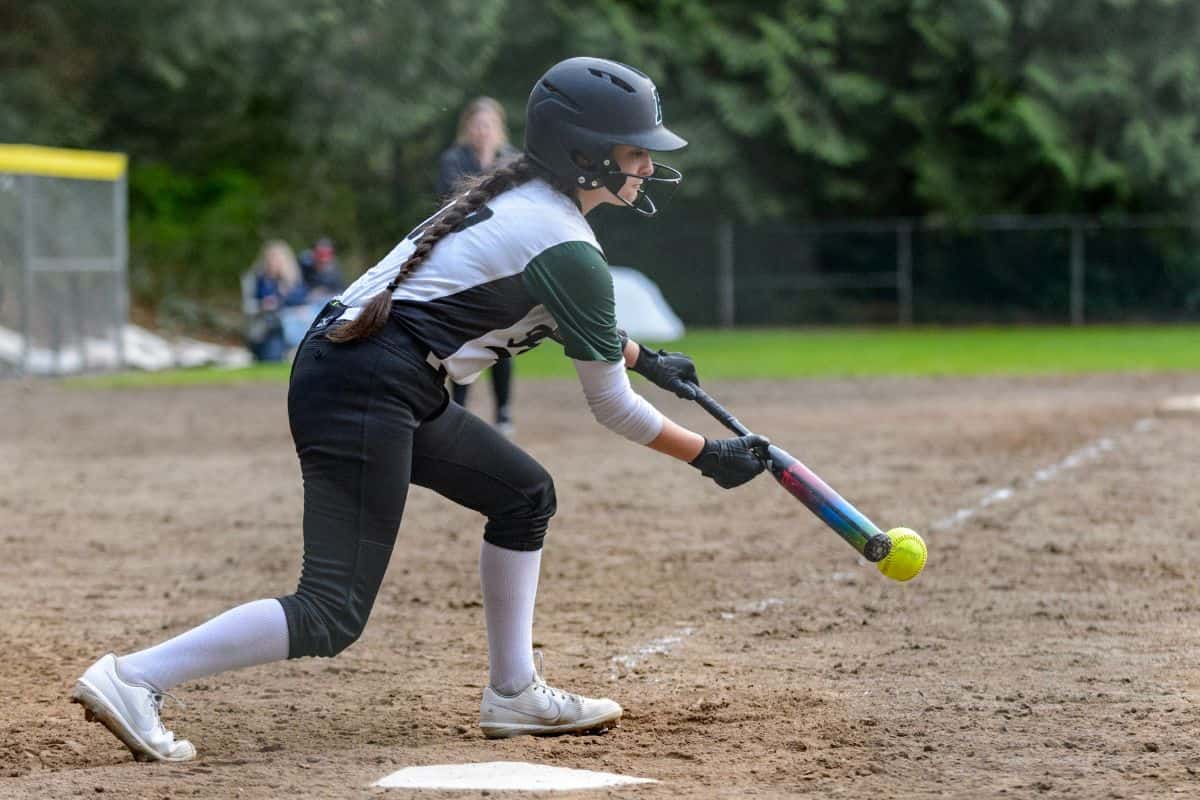
Different Types Of Swing – Uppercut vs Chop Down
We’ve touched on swings a lot, with the kind of tactics that you should follow to have a successful one, but we haven’t spoken about the different types of swing that you can do.
In this section, we’re going to compare uppercut swings and chop-down swings, looking at the benefits of each.
Neither one is necessarily better than the other. You’ll just want to use different ones in different situations.
Firstly, let’s define these two types of swing. As you can guess from their names, a “chop down swing” is where your swing path is going down towards the ball.
On the other hand, an “uppercut swing” sees the swing path hitting the ball in an upward direction.
Whichever type of swing is best can depend on the type of launch angle ball that you’ve got.
For example, if you’ve been pitched a fly ball, and you want a launch angle between 20 and 40 degrees, then a chop down swing is a good pick.
On the other hand, if you’ve got something like a ground ball, or something low, then you’ll want to use an uppercut swing and hit the ball in its center.
On the whole, though, uppercut swings are not going to be suitable for softball games. This is due to the size of the softball because it means that the uppercut swing will often hit the top of the ball.
Pace Yourself
Always remember that whatever type of swing you’re choosing to use, you don’t always have to hit a home run. We might all view home runs as the best show you can make, but you don’t need to hit one every time.
After all, who manages that? Nobody! Once you remove the pressure and only try to go for home runs occasionally, you’ll find your game will improve further because you’re not trying too hard.
It’s up to you whether you use a chop down swing or an uppercut in softball, but it’s a good idea to make sure you’ve practiced – and nailed – both.
If you’re able to switch between them, you’ll always be on top of the game, able to tackle whichever types of balls are pitched your way.
How To Improve At Being A Slow Pitch Softball Hitter – 7 Key Tips
Here are some essential tips to follow to improve at being a slow pitch softball hitter. Each of these will help you better your game!
1. Comfort
First off, comfort. We’ve mentioned comfort a lot so far, and that’s because it’s crucial. If you’re not comfortable, your mind is going to be elsewhere, and your softball game will suffer.
You need to find comfort in every aspect of the game: your uniform, your grip, the way you stand, and so on. Keep calm, keep comfortable, and you’ll be on your way to softball success.
2. The Right Equipment
You also want to have the perfect equipment. Light softball bats are best because they’ll make it easier for you to control them and hit the ball.
On top of that, you’ll want a comfortable uniform and some protective additions, like a helmet and cups. As long as you’re comfortable and the equipment is top quality, you’ll do well.
3. Be Confident
You also need to be confident. We don’t mean cocky since that can often backfire; we simply mean confident. Have faith in yourself! If you lack confidence, you’re likely to get shaken by the pressure and mess up your hits.
4. Hit Strongly
Power is the name of the game in softball, and you’ll want a strong hit. You need first to make sure that you keep control over your entire body (legs, hands, shoulders, hips) when you hit because these will help you succeed.
With the right body form, you’ll have extra momentum for your hit. When you do hit, bend your knees and move your front leg forward.
5. Good Balance
As you can guess from what we just said about form, balance is essential.
As you stand, you’ll need even body weight distribution. When you’re hitting, though, you’ll be shifting most of your body weight to the back foot – which helps you move the front one forward.
6. Judging Your Hit
Practice your hit again and again. It’s important not to rush your hit, or make it too slow. This all depends on watching the ball properly, which you must do with both eyes. Only then can you judge its distance from you.
As you practice, try swinging again and again, trying to hit a ball in front of your plate.
7. Practice, Practice, Practice
You guessed it! Becoming successful at something all depends on practice. Nobody is a professional as soon as they start, and slow pitch softball is no different.
Practice every part, from stance to swing. You should even get knowledgeable about launch angles and aLAA!
When practicing the physical side, have other players pitch to you, or use a hitting net on your own.
The Best Softball Players
If you’re practicing to be the best or at least trying to improve your slow pitch softball hitting, it’s always worth watching the greats.
By studying the best softball players, both female and male, you’ll be able to see what they do right (and sometimes do wrong). Knowing all that, you can improve your own game.
You can learn a lot from these players, whether it’s swing style, attitude, or even their confidence.
The Best Female Softball Players
- Jennie Lynn Finch – some believe Finch to be the most famous softball player that there has ever been. This is pretty impressive, given that she started playing properly when she was just 19 and retired 11 years later. In that short space of time, she cemented a historic reputation.
- Dot Richardson – Richardson has won two gold medals in Olympic softball and started playing professionally when she was 13.
The Best Male Softball Players
- Rick Scherr – Scheer played for 25 years and hit 456 home runs in 1985 alone.
- “Mighty” Mike Macenko – Macenko has hit almost 7000 home runs in his entire career – wow!
Frequently Asked Questions
How Do You Break A Hitting Slump?
Never let a scoring slump get you down. Be consistent and keep your confidence! Remain calm and ignore the past – only focus on the ball and the future.
Final Thoughts
If you want to improve your slow-pitch softball hitting, follow our guide carefully!
- Fenway Park Seating Chart: Best Seats To See the Red Sox - July 17, 2023
- What is RBI in Baseball: A Simple Explanation of The “Ribby” - July 3, 2023
- What is DFA in Baseball? A Term No Player Wants to Hear - July 3, 2023

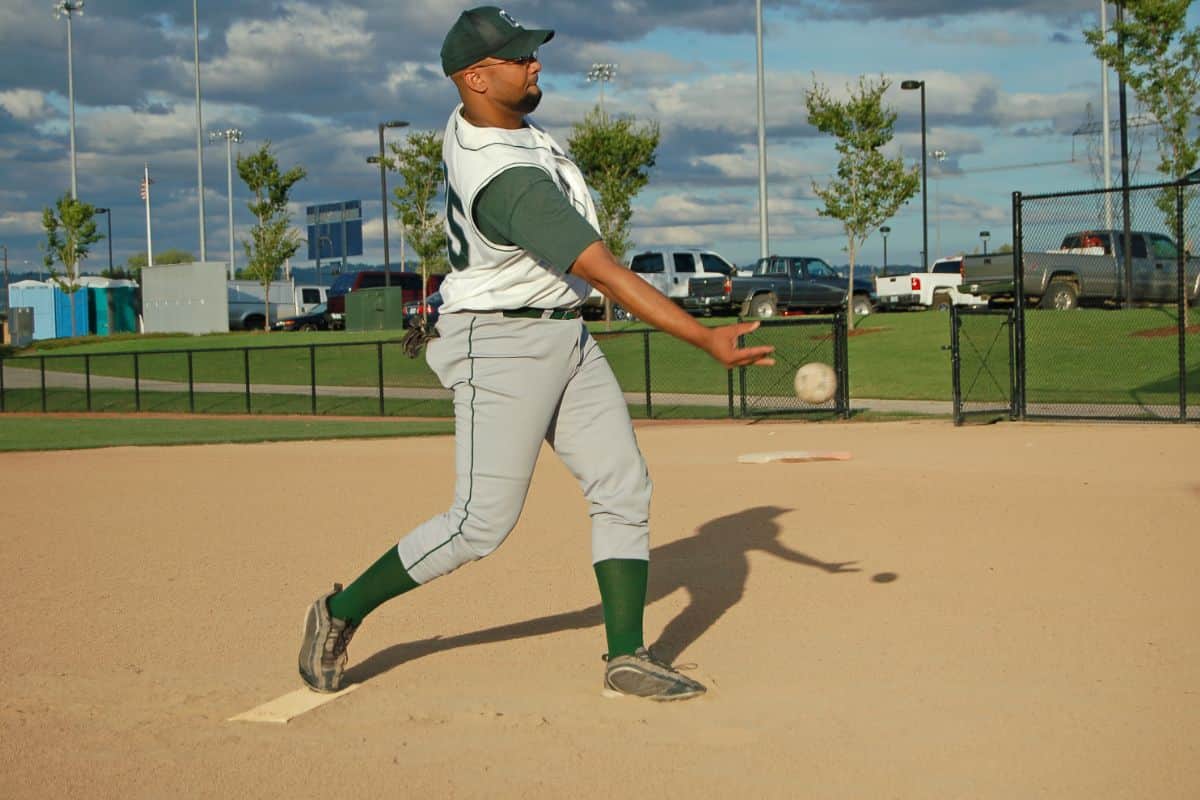
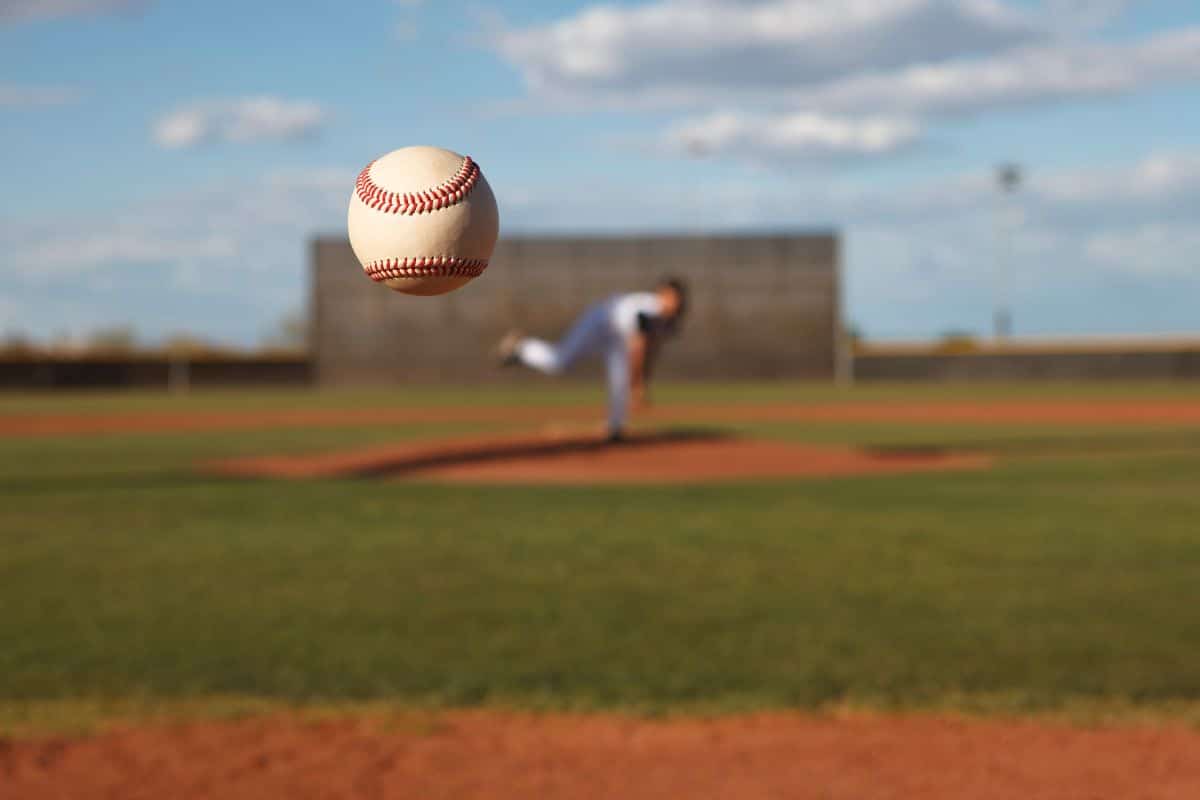
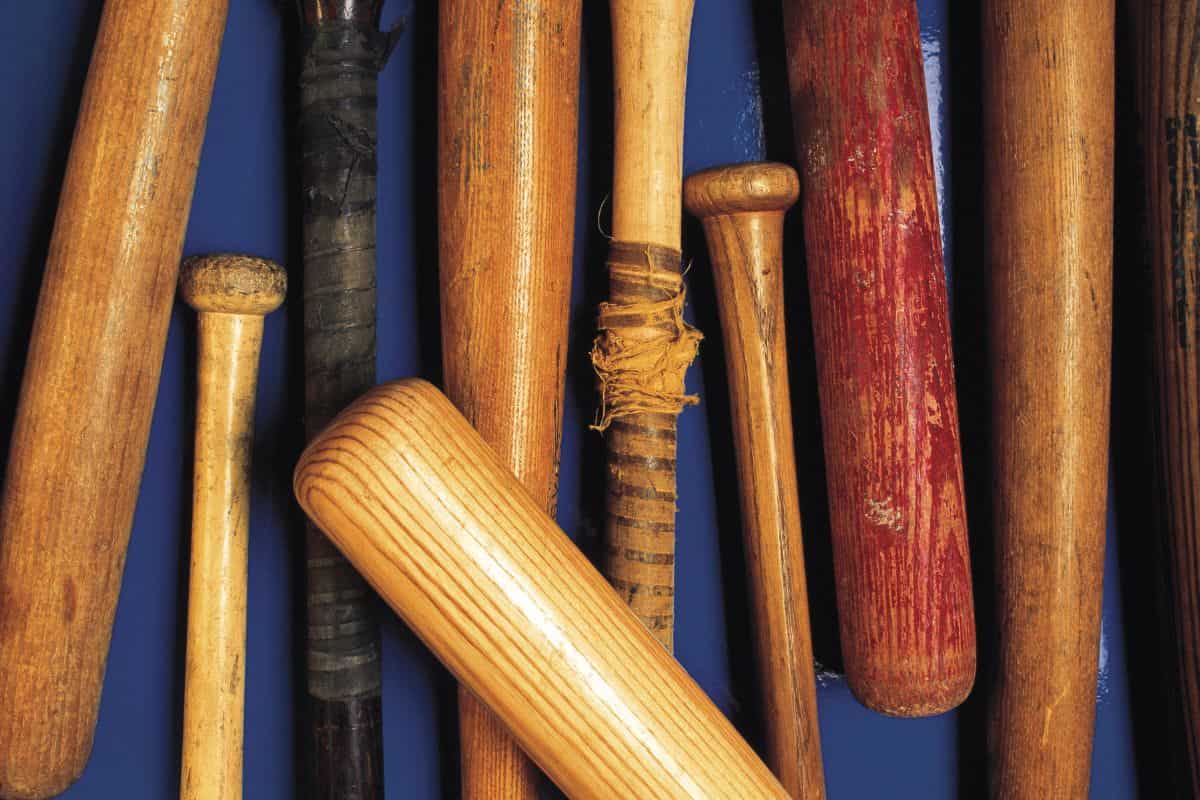


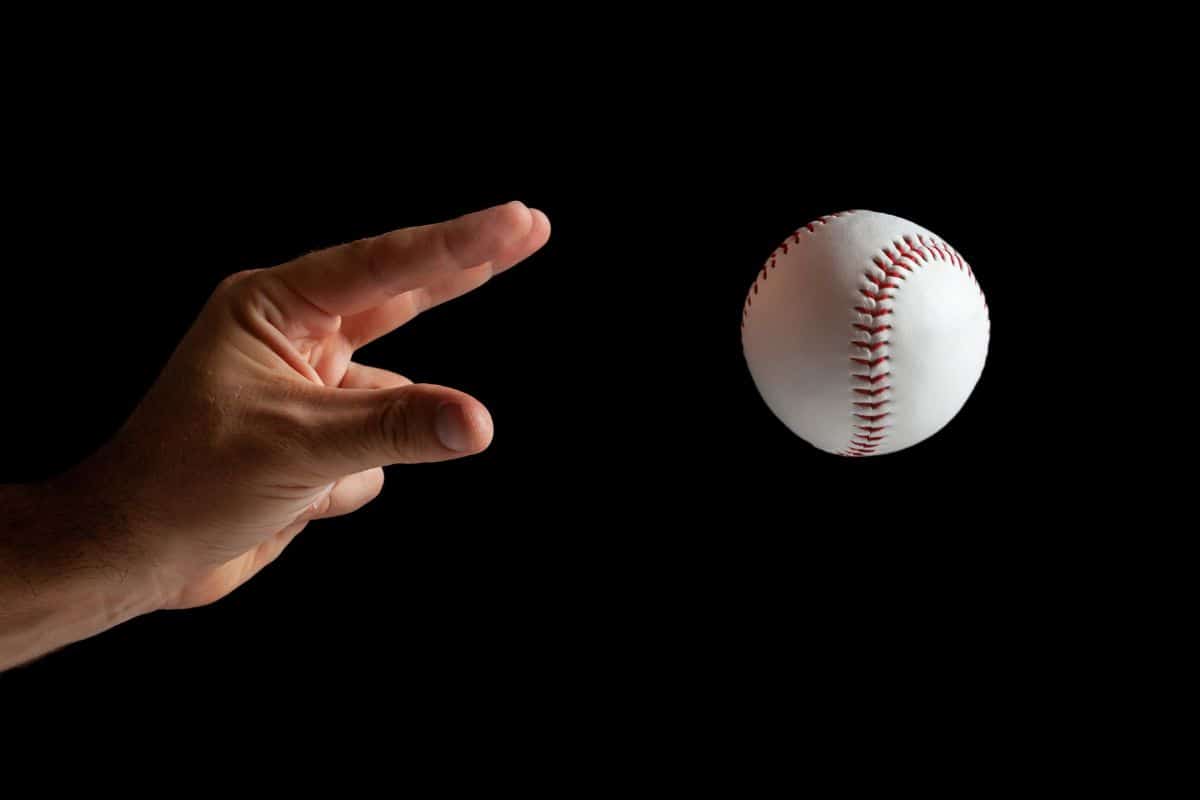

![All About Baseball Chants: The Complete Guide Everything You’ll Ever Need To Know About Baseball Chants [The Complete Guide]](https://travelbaseballcentral.com/wp-content/uploads/2022/09/Everything-Youll-Ever-Need-To-Know-About-Baseball-Chants-The-Complete-Guide.jpg)